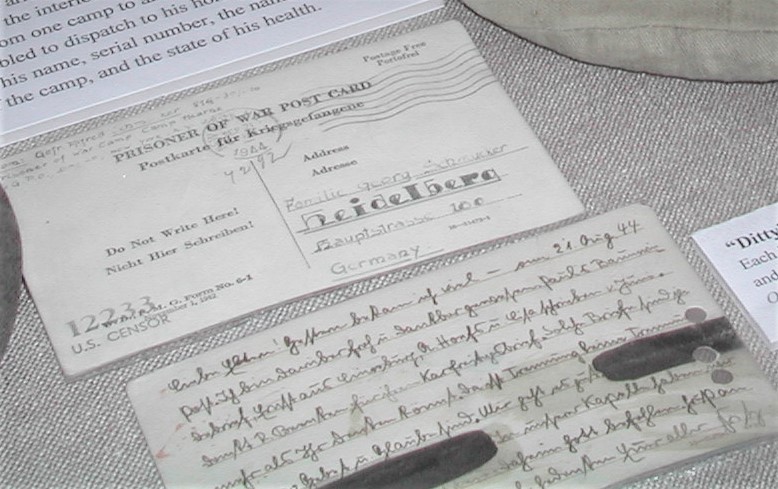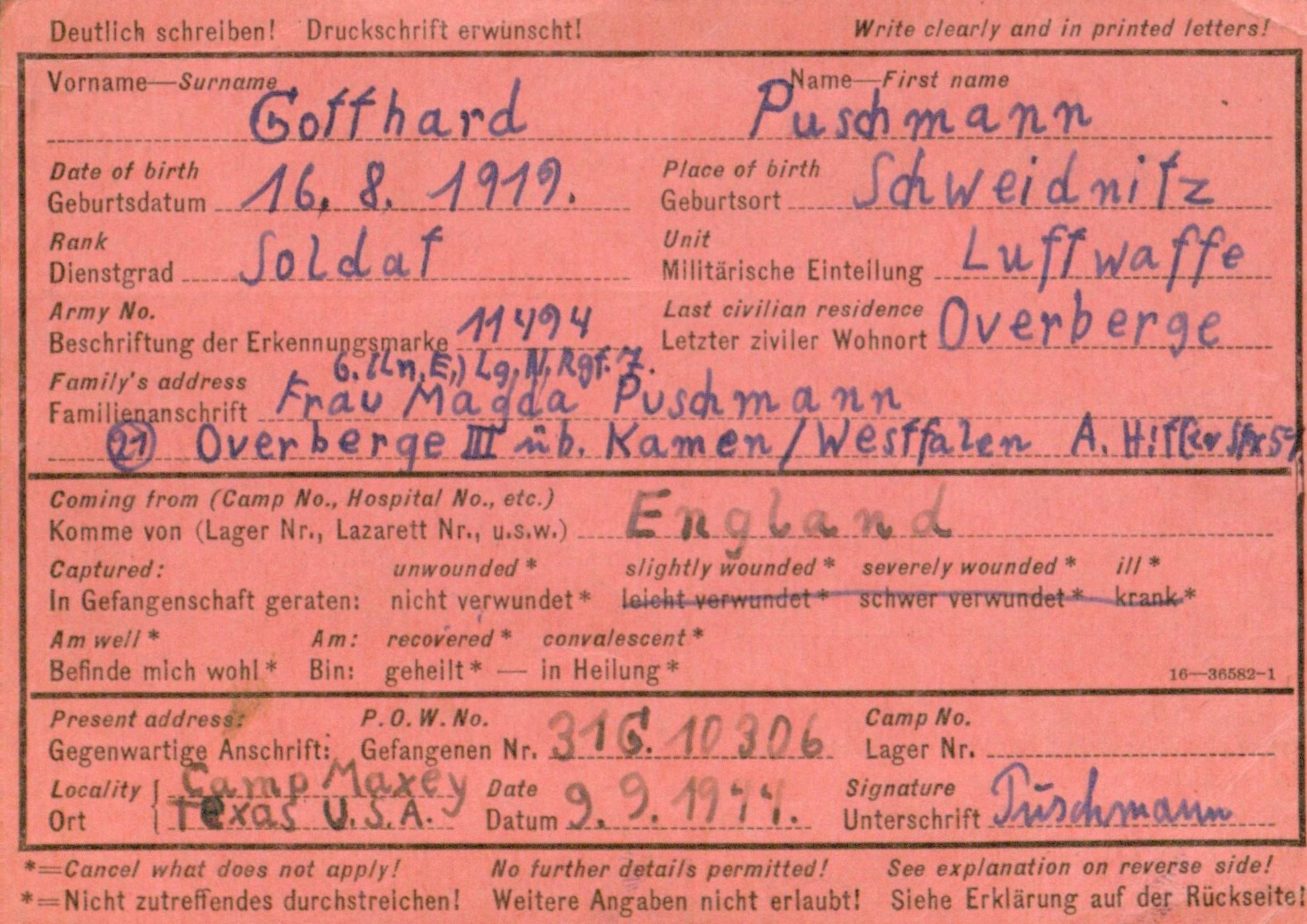
The Geneva Conventions of 1929 allowed prisoners to send and receive personal correspondence, including packages. Of course, all in-coming and out-going mail was examined and censored according to War Department instructions. The postage was free, but correspondence was restricted to War Department-issued POW stationery. Other rules related to the type of ink and number of letters and/or postcards that could be sent by each prisoner varied throughout the war due to backlogs and inability to efficiently process the high volume of correspondence. By 1944, each enlisted or NCO prisoner was allowed two letters and four postcards per month.1
Former POW Heino Erichsen remembers the news was always late and the censoring from both sides of the pond left some recipients with little more that a date and greeting.2
To facilitate notification of a prisoner’s internment assignment, he was issued a “Card of Capture” within a week of his arrival to each new Camp location. This dispatch allowed the prisoner to give the Camp’s name and address to his family and to specify the state of his health.
The International Red Cross Committee served as intermediary between warring nations, delivering correspondence and packages. They were also responsible for the internment camps’ inspections to insure compliance to the Geneva Conventions.

 —Card of Capture, Front & Back
—Card of Capture, Front & Back
__________________________________________________________1 Waters, Michael R. with Mark Long & et.al. Lone Star Stalog: German Prisoners of War at Camp Hearne, 1st ed. College Station, TX: TAMU Press, 2004, p62.
2 ibid.
